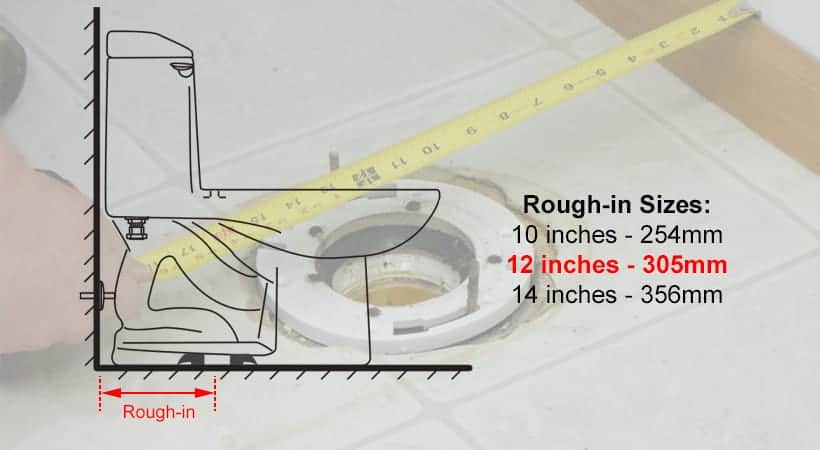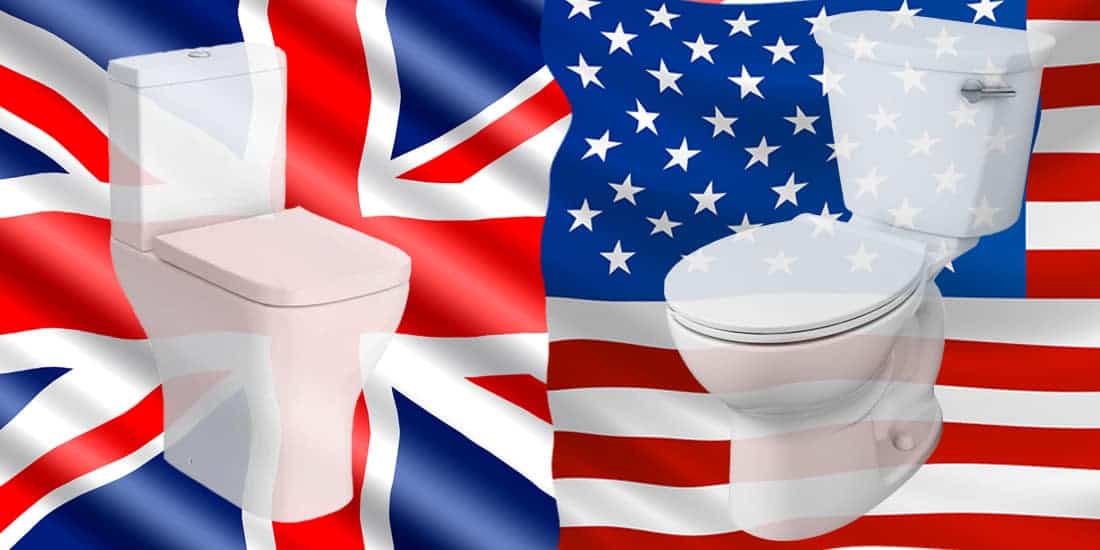What Are the Considerations to Install American Toilets in British Homes?
Whether you’re moving from the United States to the United Kingdom or simply looking to import an American toilet into your British home, it’s important to understand the differences between the two countries’ plumbing systems.
While American toilets are designed with a siphonic flushing system, British toilets adopt the washdown method. The main difference lies in the channel design of the pan. The American WC has a long and narrow channel or trapway, whereas the British loo’s channel is short and wide.
As a result, modifying the plumbing system to accommodate an American toilet in a British home can be complex, requiring careful consideration of factors such as plumbing compatibility, slope and fall, and local building regulations.
The technicality may be challenging but not impossible. So long as the entire plumbing setup complies with all relevant local standards and regulations, having an American toilet in a British home is not unthinkable. However, there are other considerations that need to be taken into account besides plumbing compliance.
Let’s explore.
Is it Legal to Install an American Toilet in the UK?
There are no specific laws or regulations in the UK that prohibit the use of American toilets in British homes. However, as with any plumbing fixture, the installation of an American toilet must comply with UK building regulations and standards to ensure safety and prevent damage to the plumbing system.
Additionally, it is important to ensure that any modifications to the plumbing system are carried out by a qualified professional plumber or installer. This eliminates any potential risks that may affect the overall system integrity.
It’s always a good idea to consult a local contractor or professional engineer or check with your local building authority before any commercial commitment.
Which British Regulation Governs the Toilet Plumbing System?
The primary regulation that governs the plumbing system for toilets in the UK is the Building Regulations Part G: Sanitation, Hot Water Safety and Water Efficiency. This regulation sets out the minimum requirements for designing, installing, and maintaining plumbing systems in buildings, including toilets.
Building Regulations Part G covers various topics related to sanitation and water usage, including the design and installation of drainage systems, the provision of adequate ventilation, and the prevention of water contamination. It also sets standards for the efficiency and performance of toilets and other plumbing fixtures, such as taps and showers.
In addition to Building Regulations Part G, other regulations or standards may apply depending on the specific circumstances of the installation, such as local bylaws or water authority requirements.
The British Standard that set the standard for Sanitary installations – Code of practice is BS 6465-3:2020. Unfortunately, the document is not freely available online or offline. A copy of the standard will cost you over £350, or half the price if you are a registered BSI subscriber.
British Versus American Toilet – The Key Difference
Here are the key differences between American and British toilets:
Waste or Soil Pipe Connection
American loos typically connect to the waste pipe using a standard wax ring seal. The wax ring is placed around the toilet flange, the opening on the floor where the WC is mounted. The pan is then lowered onto the wax ring, which forms a watertight seal between the toilet and the flange.
Once the toilet is in place, the waste outlet at the bottom connects to the waste pipe using a closet flange. The closet flange is a pipe fitting that attaches to the waste pipe and provides a secure connection point for the toilet’s waste outlet. The toilet is then bolted to the closet flange to secure it in place.
Video showing how the closet flange, wax ring seal and closet bolts are used. [2:23 ~ 5:43]
And the position of the toilet flange is fixed at 305mm or 12 inches from its centre to the wall. It is called the rough-in distance or size. With a fixed rough-in distance, it leaves very little room for error or adjustment flexibility. But the advantage here is it makes replacement super easy. You just need to buy back a toilet with the same rough-in size, which will fit perfectly.

American toilets have 3 standard rough-in sizes – 10, 12 and 14 inches. So you must be mindful of the rough-in distance when looking for a replacement toilet. Or else an offset adapter is needed to make the connection. And that may require chiselling the floor tile and concrete to fit in the adapter.
The best rough-in size is 12 inches because it is the most common size of the 3. So highly recommend setting up your waste pipe to a 12-inch rough-in. Then you will have no problem finding a replacement toilet from any brand and model.
Summary and Other Considerations
Once the technical and legal aspects of the installation are cleared, does that mean everything else afterwards will be easy to tackle?
Not really. But at least you know the groundwork has been laid, and it’s up to you to move forward with your plan. Here are some considerations to take into account when installing an American toilet in a British home:
Availability of the toilet: Apparently, American toilets are not widely available in the UK. This means you may need to research and find a retailer or supplier who can provide the toilet you want. This can be a time-consuming process and may require additional costs for shipping or importing the toilet.
Size and space: American toilets tend to be larger than British toilets, so make sure to allocate the right space for the toilet. Otherwise, the whole bathroom space and decor may appear awkward with an oversize WC.
Style and decor: American toilets may have a different style or aesthetic than British toilets, so you may end up spending more to get a toilet that will blend in with the overall style and decor of the bathroom. This includes considering the colour, shape, and design of the toilet.
Other factors to consider are the warranty, parts replacement, and service support for the toilet. American toilets may have different parts and components than British toilets, so it’s important to ensure that replacement parts are readily available and that the manufacturer offers customer support and service options in the UK.
If warranties and service support are not available in the UK, it will be extremely difficult and expensive to repair or replace the toilet if issues arise. One way around this issue is to stock up on extra parts and do the service or repair yourself. Or, an extra toilet, just in case?
Overall, you must consider all these factors when deciding whether to install an American toilet in your British home. While it may seem like a straightforward process, there may be additional considerations and costs that need to be taken into account for a successful installation and long-term use of the toilet.

